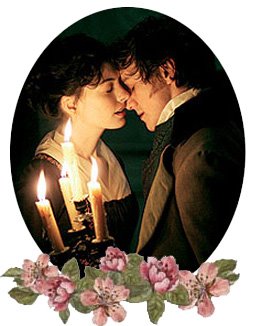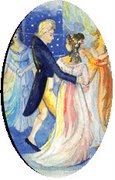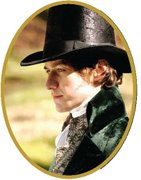Tracking Tom Lefroy and his nephew
This post contains two topics, i.e. Tom Lefroy (1776-1869) and his nephew Thomas Edward Preston Lefroy (1815-1887), but I decided to combine them due to the topic’s close association.
To the industry and accuracy of Mr. Lefroy, in conjunction with his friend, John Schoales, Esq., Chairman of the Queen's County, the public are indebted for the valuable collection of cases which has long been received with so much approbation by the Bench and Bar, as well in Westminster Hall as in the Courts in Dublin. In 1816, having then risen high in practice, he was appointed King's counsel. In 1818 he was appointed King's Serjeant, and the circumstance under which this appointment took place are so creditable to him as well as the Irish Government of that day, as they deserve a brief notice. It was well known in the profession that the Lord Lieutenant (Earl Talbot) was pressed with applications for the vacant Serjeantey, from various quarters, by persons of much influence; but desirous to give the preference to the strongest professional claims, His Excellency avails himself or the opportunity of a Privy Council which was attended by the Chancellor, the Chief Justice, and the Attorney-General, to ascertain their sentiments. To them the Lord Lieutenant submitted the names of the several candidates, and the appointment of Mr. Lefroy was the result of their unanimous opinion.
Earl Talbot, by the way, was the Lord Lieutenant of Ireland from 1817-1821. The Memoir mentioned that Tom Lefroy was appointed as the King's Serjeant on or before
 This is what Wikipedia says about King’s (or Queen’s) Serjeant:
This is what Wikipedia says about King’s (or Queen’s) Serjeant:
'Until past the middle of the 19th century a limited number of the serjeants were called King's (Queen's) Serjeants (postnominal KS or QS). A serjeant could "take silk" and become a King's Serjeant. They were appointed by letters patent and summoned to parliament.'
There is no mention whether the parliament here refers to the ones in
In any case, Tom Lefroy would be too busy as an MP in 1830s and 1840s, especially as the Baron of Exchequer (1841), hence I doubt that he would visit
Tom Lefroy and Thomas Edward Preston Lefroy
I also just received Deirdre Le Faye’s Jane Austen’s Letters, and I just learned some interesting facts about Anthony Lefroy, Tom’s brother and father of Thomas Edward Preston Lefroy (TEPL). Here’s what I found from page 545:
Anthony Lefroy (1777-1857) became a Captain in the 65th Regiment, the commission being purchased for him by his Langlois great-uncles. Unfortunately, Anthony married in 1798 Elizabeth Wilkin, who was considered in some way undesirable, and the Langlois family refused to provide any further financial assistance. Tom Lefroy was eventually able to obtain for his brother the position of Barrack-Master, first in Arundel and later in
Then the information also talked of Benjamin Lefroy, son of George Lefroy and Anne Lefroy.
‘against raking up that old story of the still living ‘Chief Justice’ – That there was something in it, is true – but nothing out of the common way – (as I beleive). Nothing to call ill usage, & no very serious sorrow endured. The York Lefroys got up a very strong version of it all, & spread their own notions in the family – but they were for years very angry with their Kinsman, & rather delighted in a proof as they thought, of his early heartlessness. I have my story from my Mother, who was near at the time – It was a disappointment, but Mrs. Lefroy sent the gentleman off at the end of a very few weeks, that no more mischief might be done. If his love had continued a few more years, he might have sought her out again – as he was then making enough to marry on – but who can wonder that he did not? He was settled in
The letter above was then refuted by Anna Austen Lefroy in her letter dated
What I perceived was that Anthony and his family shared a considerable close relationship with Tom Lefroy, and somehow Caroline misinterpreted this, or even shared her own negativity for the York Lefroys for some reasons (with all due respect). Let us recall that JEAL wrote to none other than TEPL to confirm Anna Lefroy’s information on her letter
Coming back further to the hypothesis that Tom Lefroy was the one behind TEPL’s purchase of the Cadell/Austen letter. Reading such information about the York Lefroys, I am more convinced that it was very sensible for Tom to ask for his nephew’s help (TEPL) to obtain the Cadell letter. In 1840s, Tom would be very busy with his schedules in
Just now, I also learned that TEPL was a barrister like his uncle (as a law student of the Middle Temple, he was called to the Bar on June 7, 1844 - see The Jurist), and later became the judge of the county courts. In 1840 TEPL, I assume already a lawyer by then, co-authored a very interesting book about cases against railways and canals in
It might be just me, but a lawyer in the midst of his career such as Thomas Edward Preston Lefroy would not spend his time lurking around the Cadell papers sale just to get a 'mundane and trivial' Cadell/Austenletter, particularly because he was not engaged yet with Jemima (of an Austen mother) in 1840. TEPL would be prompted to do so, and the only person with such influence was his uncle, Tom Lefroy, who was already an MP for Dublin University that time.
PS
 I just realised that TEPL's father (Anthony Lefroy) married Miss Elizabeth Wilkin in 1798. I mean, duh, it was in this article. What I'm trying to say is that the Langlois great-uncles (including Benjamin Langlois, I assume?) indeed cut off their financial supports for Anthony, and it was a big matter for the Lefroys. In 1798, Tom had not married Mary Paul yet. Could it be that one of the reasons that prompted Tom to resume his engagement with Mary instead of nursing his feelings towards Jane was Anthony's fate?
I just realised that TEPL's father (Anthony Lefroy) married Miss Elizabeth Wilkin in 1798. I mean, duh, it was in this article. What I'm trying to say is that the Langlois great-uncles (including Benjamin Langlois, I assume?) indeed cut off their financial supports for Anthony, and it was a big matter for the Lefroys. In 1798, Tom had not married Mary Paul yet. Could it be that one of the reasons that prompted Tom to resume his engagement with Mary instead of nursing his feelings towards Jane was Anthony's fate?
If we return to the list of Tom Lefroy’s siblings, we will find out that Anthony was the second son, followed by Benjamin Lefroy (born in 1782), who was merely 16 years old in 1798. The fourth son (Christopher Lefroy) was still 14 years old, and the last son (Henry Lefroy) was still 9 years old; practically a kid. I can better gaze into Tom's mind now. In 1798, he was still in love with Jane, an 'undesirable' woman in Benjamin Langlois' POV. On the other hand, Anthony was also in love with an 'undesirable' woman, Elizabeth Wilkin, and even married her. I suspect that Anthony and Tom were the main hopes for the Lefroys, hence when Anthony was cut off and Tom's second younger brother (Benjamin) was still a teenager, Tom felt the responsibility to save his family fell solely upon him. Hence, the decision to follow his head instead of his heart. Tom should save his family first, and thus chose to leave Jane for good. Legally, at least. It was a relief for Tom that Mary Paul was a kind and loving girl, thus his sacrifice was not without merit.
The more I think about it, the more I can understand Tom Lefroy's closeness with Thomas Edward Preston Lefroy (TEPL) and possibly also the York Lefroys; Tom felt connected with Anthony for what his brother chose to do, something that Tom, as the eldest son, could not afford, and had no luxury to do.
Reference:
Austen-Leigh, J. E. 1871, A Memoir of Jane Austen and Other Family Recollections (2002 Oxford edition), Oxford World's Classics, Oxford.
Faye, D. L. 1997, Jane Austen's Letters, Oxford University Press, Oxford.
Faye, D. l., Austen-Leigh, W. & Austen-Leigh, R. A. 1989, Jane Austen: A Family Record, The British Library, London.
Lefroy, T. 1871, Memoir of Chief Justice Lefroy, Hodges, Foster & Co., Dublin.
Sweet, S., Stevens, V., Stevens, R. & Norton, G. S. 1845, The Jurist London, Dublin.
Pic 1: Tom Lefroy circa 1855
Pic 2: Westminster Hall early 19th century, from Wikipedia
Pic 3: Guildhall
Pic 4: Anna Austen Lefroy, from 'Memoir of Jane Austen'
Pic 5: Tom Lefroy in 1799, by G. Engleheart, from Carrigglas website














































10 comments:
i am not sure how to post on here but if you could start this topic, it would be a few things.
*Did anyone else notice Jane left Tom in the movie when she noticed they would be penniless, however when they started to run away she knew that they would barely have money?
*If Jane and Tom had lived together/gotten married and had children, what do you think their children's names would be?
<3
I love this site so much!!!
Hi there, thanks for dropping by (what's your name, if you don't mind?).
Your first question:
*Did anyone else notice Jane left Tom in the movie when she noticed they would be penniless, however when they started to run away she knew that they would barely have money?
I believe Jane realised that already. The thing is, she did not realise the full extent of Tom being penniless, that it would also affect his family. The letter provided her the knowledge that Tom's family would suffer if Tom did not resume sending the money to them; which would very likely the case had he ran away with Jane. Tom's brother (Anthony Lefroy) suffered similar case as he married Elizabeth Wilkin - just as I explained in this article.
If Jane and Tom had lived together/gotten married and had children, what do you think their children's names would be?
Hmmm... that's entirely up to them, but I like the name 'Jane Christmas Lefroy. I will still vote for that name, for their eldest daughter. For the boy, that would be Anthony George Lefroy, a tribute to both fathers of Tom and Jane.
Interesting questions, thanks a lot!
Thanks Icha, I thoroughly enjoyed this article. The Anthony Lefroy/Elizabeth Wilkin story is very interesting. It says a lot for Tom Lefroy's character that he accepted them and their situation, when the rest of the family (or the Langlois', at least) shunned them. Wonderful research!
I know... is it not exciting, Michelle? ^_^
I always thought that Tom was not a cruel guy, and all the indications found during our research showed that he was still very fond of Jane even in 1797. And now, we knew what happened that changed the tide: Anthony's marriage in 1798. Did he elope then? If so, that would make Uncle Ben Langlois even more angry.
It says a lot for Tom Lefroy's character that he accepted them and their situation, when the rest of the family (or the Langlois', at least) shunned them.
Indeed. Tom was a good guy. A good brother, a good son.
In any case, the more I think of it, the more I am certain that Anthony's fate was the main reason for Tom to resume his engagement with Mary and leave Jane behind.
So sad, eh?
Thanks for answering my questions! I am the anon. person... sorry I just didn't want to give out my name completely!!!!
Oh, that;s okay, Rachel <3
If you want to remain anonymous, that is your right to behold. The thing is, I feel rather awkward calling a friend 'anon', hence it's better for me if readers and friends dropped their comments with a name, even a screen name like Darth Vader or Voldermort will do ^_^
But of course, it's up to you, my friend.
And what do you think of the possible name of Jane and Tom's daughter then? And son?
And what do you think of the possible name of Jane and Tom's daughter then? And son?
I was thinking...sort of corny, however 'Elizabeth' for P&P and Bennett for a boy. I know thats odd and probably would never work- however...thats what I thought.
How did you get to go to Hampshire/etc?
Rachel <3, if you don't mind, you can drop me an email at tara_parvati@yahoo.com
How did you get to go to Hampshire/etc?
Oh, I did not go. I wish I went... it's my dear friend Rachel (co-admin of this blog) who went there. She's a British girl, living very close to London, hence was able to drive to Hampshire. God I envy her ^_^ in the best sense!
Michelle, yeah, mate, 1798! A year before Tom's wedding with Mary in March 1799. I bet Anthony got married (I tend to think he eloped) before November 1798, before Tom went back to Ireland. Oh, such a sad story, I can cry now... sob!
Speaking of which, Rachel just finished beta-ing my new chapter of Tom and TEPL. Will post it asap this afternoon. Hope you like it. Anthony and Mary also appear, and Jane Christmas as well!
The denial of self and choosing to honour the family is noble.
Indeed, you are SO right!
I am so glad to find someone who researches things that they feel. I have always felt that Jane Austen would have had a true love in her life. As I have always felt that her books had been very inspired by many true and real things happening. Her writing is almost too in touch and personal to believe otherwise, think you not?
I love and appreciate all your hard work and research on Tom LeFroy. I think that is so important to cast someone that is most likely true and good in that light. Even in today's society a situation like Tom's and his brother's is a tragedy, and causes much introspection and vascillation in terms of committment, so to ponder in the light of 1798 is truly profound.
Thank you Brittany, and welcome to the BJ Fansite! ^_^
Yes, I presume that you have read the latest development that Anthony was very likely the cause of Tom's going to Ireland?
http://becomingjane.blogspot.com/2007/08/anthony-and-tom-brotherly-love.html
Anyway, there's a debate whether they were in good terms or that Tom only helped Anthony because he had to do so. Personally, I believe Tom loved Anthony and his family that much that he would always step forward to save them. He has too big a sense of responsibility to sit idle or do nothing about it.
And yes, I do believe that JA's works had too much personal colours in there that they would definitely be influenced by her personal experience. Such a genius!
Post a Comment